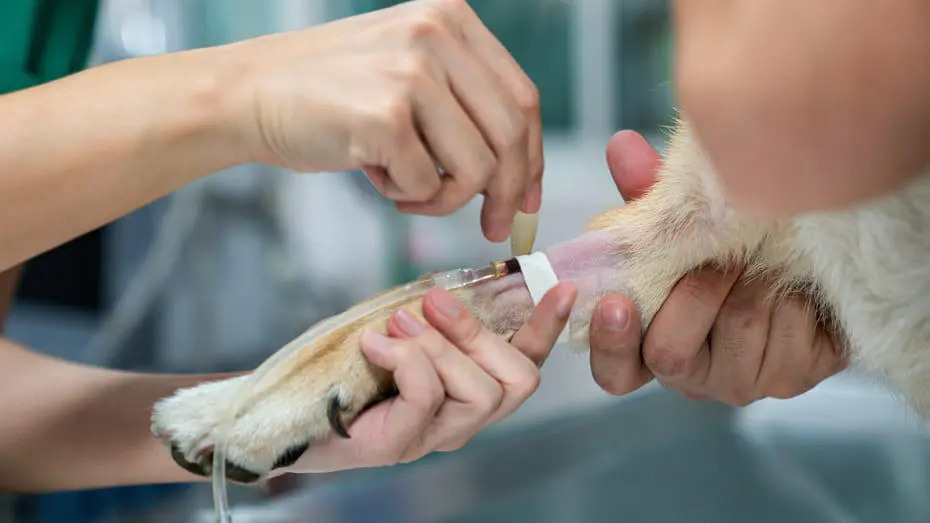
Xylitol is a widely used sugar alternative that has gained popularity due to the widespread belief that it is better for human oral health, has less calories, and has a lower glycemic index than sugar. However, although xylitol is perfectly OK to ingest for people, it may be very toxic for dogs. In 2020, dogs inadvertently ingested this substance 5,846 times, according to the Pet Poison Helpline.
To help you understand why xylitol is so dangerous for your dog, and what to do if your dog accidentally ingests it, we’ve put together this guide.
For those unfamiliar, what exactly is xylitol?
Xylitol is a naturally occurring substance used as a sugar substitute in many human foods, such as sauces, spreads, and gum. Fruits and vegetables like strawberries, plums, oats, mushrooms, and even lettuce all contain xylitol, sugar alcohol. Commercial xylitol is typically made by processing corn fiber or birch trees.
Canine toxicity of xylitol: what makes it so dangerous?
Extremely low blood sugar levels, also known as hypoglycemia, are the result of xylitol poisoning in dogs, making this condition potentially lethal. The canine pancreas mistakes it for actual sugar, producing more insulin to flush out the real sugar and bring down the blood sugar. Liver failure may also be brought on by xylitol, however, the specific mechanism by which this occurs is yet unknown to veterinary professionals.
If dogs ingest too much xylitol, would they become sick?
Dogs of different sizes and caloric intakes have different reactions to xylitol. For instance, a tiny dog may not be able to tolerate even one piece of gum due to the wide range of xylitol concentrations found in sugar-free chewing gum (anything from 1% to 90%).
Vets Now state that an overdose of 50–100mg xylitol per kg of body weight might result in hypoglycemia. If your dog accidentally consumes xylitol, contact your vet immediately; based on the amount of xylitol consumed in proportion to the dog’s body weight, your doctor will be able to determine whether or not your dog has consumed a hazardous amount.
What foods contain xylitol?

With the popularity of xylitol growing, a vast number of foods now contain it, some of the most common being:
- Breath mints and gum
- Cough syrup
- Chewable vitamins
- Mouthwash
- Toothpaste
- Some peanut and nut butters
- Baked goods (particularly low-calorie options, or those made for diabetic individuals, as sugar is normally substituted for xylitol in these products)
- Medicines
- Supplements
- Sugar-free desserts
Due to the widespread presence of xylitol, pet owners are advised to exercise extreme care if feeding their canine companions commercially prepared foods. Better still, keep to feeding your dog just dog-specific food and treats and never any human food.
Canine xylitol toxicity symptoms
After consuming xylitol, symptoms often appear within 30 minutes, however they might appear sooner or take as long as 12 hours to manifest. If you suspect your pet has taken xylitol, it is important to seek immediate veterinary attention. They may tell you to bring your dog in for an examination right quickly, or they may tell you to keep an eye on him at home until you can get to the clinic. In the event that your veterinarian recommends keeping a close eye on your pet, they should also go through what symptoms to watch for. The following are some of the most often seen indicators of xylitol toxicity in dogs:
- Vomiting
- Lethargy
- Weakness
- Difficulty walking (which may include struggling to balance and falling over)
- Collapse
- Seizures
- Coma
Prompt veterinary care is essential if you see any of these signs or believe your dog has consumed xylitol. This is because xylitol is rapidly taken into the circulation, and the ensuing dip in blood sugar levels must be avoided or swiftly brought under control if your dog is to have any hope of making a complete recovery. Checking the product’s package may give you a ballpark estimate of how much xylitol your pet may have swallowed, which will be very useful when you contact your vet. If your veterinarian recommends that you bring your dog in for evaluation, bring any packaging with you so that they can determine how much xylitol your dog may have consumed. This will allow them to develop an appropriate treatment strategy.
Canine xylitol poisoning: first aid and treatment

In most cases, if your vet suspects xylitol poisoning, they will want to see your pet right immediately to obtain a history, do a physical exam, and maybe perform further testing (such as blood work). There are a variety of various treatment options for this illness, and your vet will discuss them with you.
If you get to your veterinarians fast enough, they may attempt to induce vomiting to try to eliminate the xylitol from your dog’s system. Also, depending on your pup’s blood sugar level (something that can be monitored by a blood test) your dog may need to be placed on an intravenous drip with a particular sugar solution to assist them to control their blood sugar levels again. Your dog will likely need to spend some time in the hospital, where he or she will be under the constant care and evaluation of a team of veterinarians. Having your dog’s liver impacted is far more dangerous and potentially deadly, therefore your vet may recommend long-term treatment or send you to a specialist.
Early detection of xylitol poisoning is associated with a better prognosis, but if the poisoning progresses to liver failure, it may be fatal.
How to Keep Dogs Safe from Xylitol Poisoning
In most situations, xylitol poisoning may be averted by simply putting goods that contain this chemical out of reach and never, ever giving your dog food without checking what it contai